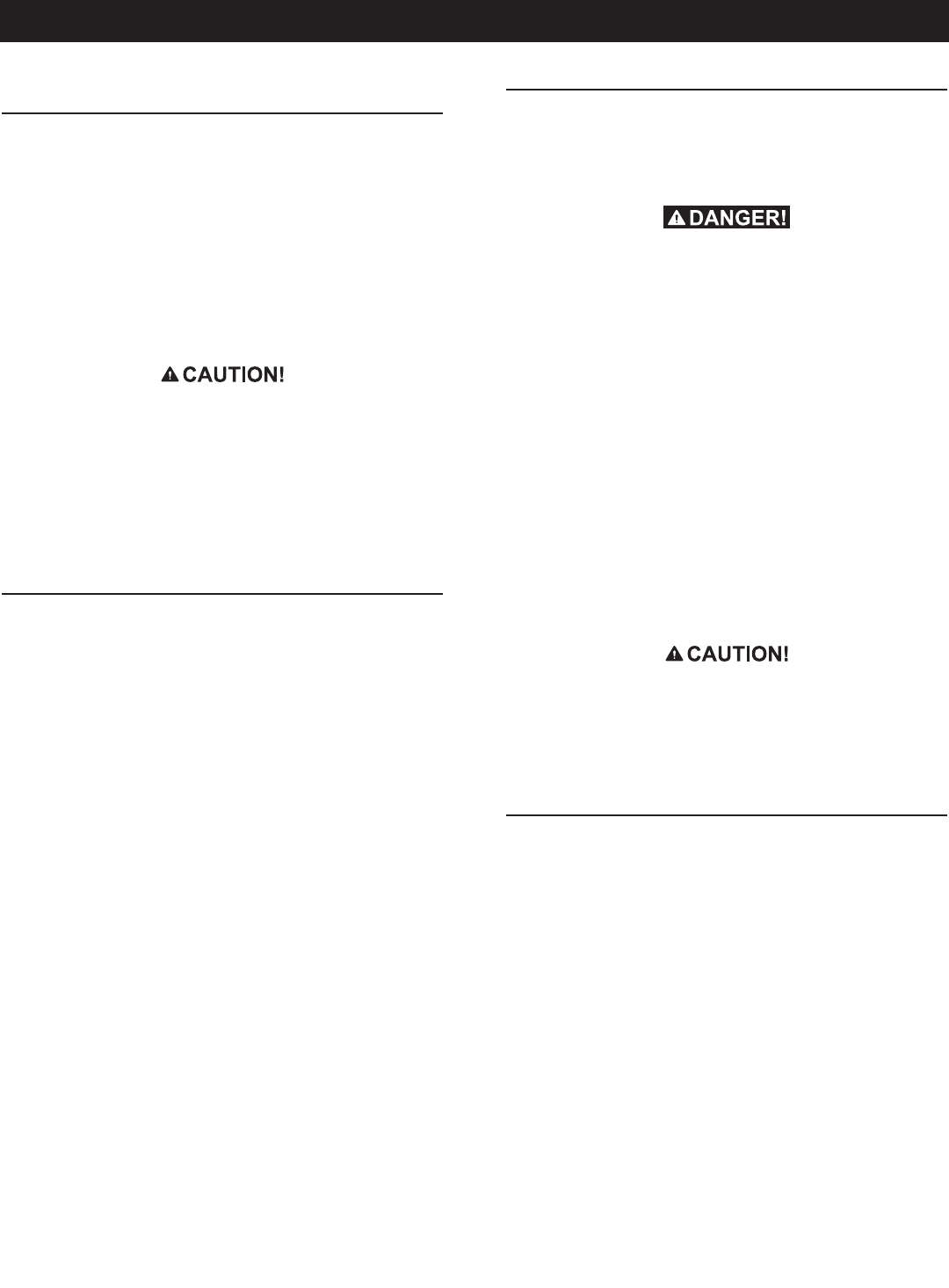
27
2.4.1 FUEL TANK
Either the generator must share the vehicle engine's fuel tank,
or install a separate fuel tank for the generator set. All fuel tanks
installed on the vehicle must be constructed, installed and
restrained so they comply with applicable codes, standards and
regulations.
If the generator is to share the vehicle engine's tank, separate
fuel pickup tubes are required for the engine and the generator.
The manufacturer recommends that the fuel pickup tube be 2 to
3 inches (51 to 76 mm) shorter than the vehicle engine's pickup
tube. This prevents the generator from depleting the entire fuel
supply during prolonged generator operating periods.
n
Do NOT tee the generator fuel supply line
into the vehicle engine fuel supply line. If
this is done, the generator will be starved of
fuel when both engines are operating at the
same time. Also, while the vehicle engine is
not running, generator operation may drain
the vehicle engine supply line, making it dif-
ficult to start the vehicle engine.
2.4.2 GENERATOR FUEL SUPPLY LINE
2.4.2.1 Rigid Fuel Lines
Those lines used to supply fuel from a tank to the generator must
comply with applicable codes, standards and regulations. The fol-
lowing general rules apply to rigid fuel lines:
Rigid lines should be of annealed, seamless, drawn aluminum •
or steel.
Lines and fittings must comply with SAE J512F, “Standard •
Automotive Fittings,” or with ANSI B126.26 (latest edition).
Route the fuel line so that at least 2 inches (51 mm) of clear-•
ance is maintained between the line and any exhaust system
parts.
Do not attach electrical wiring to fuel lines. Route the wiring so •
it cannot come into contact with any fuel line.
Route fuel lines so if they leak, fuel does not drip onto any •
electrical or exhaust system parts.
Use nonferrous metal straps without sharp edges to secure •
fuel lines.
2.4.2.2 Flexible Fuel Line
Use an approved flexible length of fuel hose between the generator
fuel inlet connection and rigid fuel lines. This prevents breaking of
the line caused by vibration, shifting, settling or movement. The
following rules apply:
The flexible hose must comply with SAE J30R7, “Standard for •
Fuel and Oil Hose.” It must be approved for use with gasoline
and low permeability.
The hose should be at least 6 inches (152 mm) longer than •
is needed to prevent the hose from rupturing if the generator
shifts or settles.
2.5 EXHAUST SYSTEM
The generator exhaust system must be safely and properly
installed. Only approved mufflers and other exhaust system parts
must be used. A properly installed exhaust system must be vapor
tight, quiet and completely safe.
n
The generator engine gives off DEADLY
carbon monoxide gas through its exhaust
system. This dangerous gas, if breathed in
sufficient concentrations, can cause uncon-
sciousness or even death. Never operate
the generator set with the vehicle inside
any garage or other enclosed area. DO
NOT OPERATE THE GENERATOR IF THE
EXHAUST SYSTEM IS LEAKING OR HAS
BEEN DAMAGED. SYMPTOMS OF CARBON
MONOXIDE POISONING ARE (a) inability to
think coherently; (b) vomiting; (c) twitch-
ing muscles; (d) throbbing temples; (e)
dizziness; (f) headaches; (g) weakness;
and (h) sleepiness. IF FEELING ANY OF
THESE SYMPTOMS, MOVE INTO FRESH
AIR IMMEDIATELY. IF SYMPTOMS PERSIST,
GET MEDICAL HELP. Do not operate the
generator until its exhaust system has been
inspected and properly repaired.
n
Never tee the generator engine exhaust pipe
into the vehicle engine exhaust piping. This
causes excessive back pressure on the gen-
erator engine. Also, water from one engine
can damage the other engine.
2.5.1 SPARK ARRESTOR
This spark arrestor assembly meets code and standard require-
ments of the U.S. Forest Service. Use only mufflers and parts
approved by the manufacturer. Any person(s) installing an unap-
proved muffler, or an unapproved exhaust system part, or modify-
ing an exhaust system in any way that might cause a hazard, is
liable for any damage, injury or warranty expense that might be
caused by such unapproved installation or modification.
Failure to provide and maintain a spark arrestor may be in violation
of the law. If this generator is used on any forest covered, brush
covered or grass covered unimproved land, provide a spark arres-
tor. The vehicle owner or operator must maintain this device in
good condition. In the state of California, the preceding is required
by law (Section 4442 of the California Public Resources Code).
Other states may have similar laws. Federal laws apply on federal
lands.
When installing/replacing the tailpipe or spark arrestor compo-
nents, verify that the tailpipe has a hole to securely fasten the
spark arrestor components (see Figures 2.11 and 2.12). Use only
manufacturer supplied hardware. Substitution of parts may cause
damage to the screen or a loose fit to the tailpipe.
Installation
